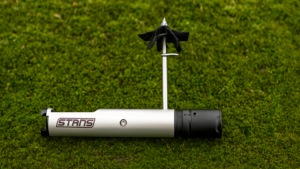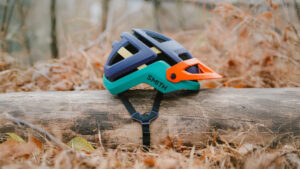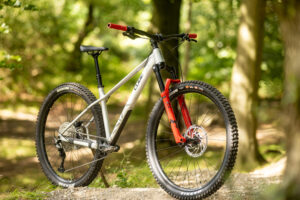The SRAM is by no means a bad crank, but it fails to stand out in a very competitive field.
SRAM XX1 1x chainset (2015) review
Hi-tech as SRAM’s 1×11 drive train is, the XX1 carbon chainset isn’t as stiff as the other two in test. We suspect this is because the carbon arms aren’t hollow. We’ve not got a fancy test lab at mbr to prove it, but switching between the cranks was enough to highlight the reduction in stiffness, and it’s 106g heavier than the Next SL.
SRAM went to great lengths designing the compact 76mm BCD spider to ensure a wide selection of chainring sizes, and that the chainrings could easily be swapped without having to remove the chainset. This is a welcome feature for pro riders fine-tuning their gearing, but most trail riders will only change the chainring when it’s worn out.
So instead of buying an XX1 chainring (the crank doesn’t come with one) you could save up to 80g at no extra cost by getting a second party direct-mount ring and ditching the XX1 spider. In fact, by the time you read this, XX1, X01 and X1 chainsets will be available with a new SRAM X-Sync direct-mount ring.
One thing that separates XX1 from most other cranks is that it’s available in two widths, or Q-factors. This means you can more closely match crank spacing to pelvis width for better pedalling efficiency. Again, it’s an XC thing that most trail riders won’t give a hoot about.
If the XX1 chainset comes on your new bike, you won’t be rushing to upgrade it
in a hurry. That said, if you want a fancy carbon crank and your budget won’t stretch to the Race Face Next SL or Specialized S-Works, we’d recommend the cheaper second-tier X01, with its new direct-mount ring, over the XX1 version.
Verdict
The SRAM XX1 was relegated to the bottom step of our podium only because it was the heaviest, the most flexible and it's not as good value as the price suggests because you'll need to buy a chainring and a bottom bracket.

















